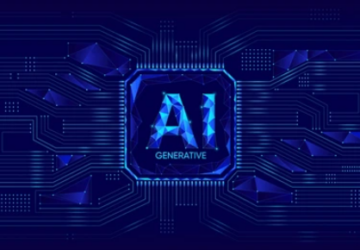Technical progress inexorably transforms industrial professions: some emerge while others reinvent themselves or disappear. This process has been amplifying and accelerating since the end of the 20th century with the development of industrial computing. With digital transformation, we are shifting into high gear.
Among all the digital technologies being deployed in the industrial sector, digital twins and artificial intelligence (AI) hold a predominant place. Enhanced design, predictive maintenance, process automation, decision-making support… the benefits of these innovations are numerous, provided they are integrated into professions. Through this article, we provide you with some insights on how to reconcile traditional professions with technological innovations.
Technologies that redefine industrial professions.
The digital transformation and Industry 4.0 invoke a myriad of technologies: Internet of Things (IoT), robotics, 3D printing… Among them, the digital twin and AI hold a special place: these technologies cover all industrial projects and transform many professions.
The digital twin, a new tool for industrial professions.
The digital twin plays a crucial role in the evolution of industrial professions. It is a virtual representation of an object, process, or system, capable of simulating its physical counterpart in real time. The digital twin acts as a bridge between the physical and digital worlds. This technology radically transforms the management of an industrial product throughout its lifecycle, from its design to its operation, including its maintenance in operational condition.
The use of a digital twin is revolutionizing design and manufacturing by allowing numerous iterations at no additional cost. This improves the product by reducing design errors and development time.
The professions involved during these phases had already undergone significant changes with CAD/CAM (Computer-Aided Design and Computer-Aided Manufacturing). The digital twin amplifies these changes. Some examples include:
- The design engineer can test and optimize a product in a virtual environment. For example, they can simulate the behavior of an aircraft under flying conditions, the energy efficiency of a moving ship, or the performance of a wind turbine facing different winds, without having to construct a costly physical prototype.
- The draftsman can visualize the design in a realistic and interactive 3D environment, exploring every detail of the design.
- The CAD technician can test different designs to detect potential problems before manufacturing. They can also use the digital twin to plan the manufacturing process, for example by determining the optimal order of machining operations.
- The process engineer can use the digital twin to optimize production processes. For example, it is possible to simulate different production scenarios to determine the most efficient one.
The digital twin is also a valuable ally during the exploitation phase of an industrial product. It profoundly transforms professions related to maintenance, achieving a real paradigm shift: whereas maintenance was mainly reactive (repairing failures when they occur), the digital twin generalizes predictive maintenance.
Thanks to the data collected on the physical object, it is possible to predict failures before they occur. As a result, maintenance professions are increasingly focused on continuously monitoring the condition of the product and analyzing the collected data to solve problems before they lead to costly breakdowns.
Artificial intelligence, an accelerator of operational efficiency.
Artificial intelligence also promises to transform industrial professions as the promises carried by this technology are significant. AI is, above all, a relevant answer to process and analyze massive data (big data) and to extract actionable information: by helping to decipher the complexity of reality, AI assists humans in making strategic decisions (risk management, investment, business processes, etc.). As a result, AI impacts several professions across the entire value chain.
AI is also the cornerstone of automation for industrial companies and induces changes at all levels. Examples:
- Production automation: AI allows the automation of complex production processes. The role of operators then shifts towards supervision, coordination, and optimization of automated systems.
- Predictive maintenance: Maintenance technicians benefit from AI, which allows them to intervene before a failure occurs. This is one of the many synergies between AI and digital twin.
- Supply chain automation: Managers can rely on AI to manage inventory and automate procurement. Here too, AI allows them to anticipate more.

Integrating digital innovations into industrial professions: towards a culture of innovation.
To take advantage of new digital technologies rather than being overwhelmed by them, industrial companies must identify opportunities for integration and adopt a culture of innovation to promote the internal dissemination of these innovations.
Identify the opportunities for integrating digital technologies.
To determine whether it is relevant to deploy a digital twin or AI in an industrial context, it is essential to analyze existing processes beforehand to identify integration opportunities and pinpoint the points of convergence between these technologies and traditional trades.
For example, to analyze a maintenance process, one must understand the current process (inspection, repair, maintenance…) and take into account the resources mobilized. The next step is to identify improvement areas (recurring failures, prolonged downtimes, challenges faced, etc.) and set clear objectives to enhance this process.
Then arises the question of means: would a digital twin help achieve these objectives? Would virtual reality be relevant for remote diagnostics? Ultimately, the analysis must show whether the cost and effort required to implement a digital twin would be justified by the potential improvements in the maintenance process.
Adopt a culture of innovation.
The success of a digital transformation relies primarily on the human factor. The most powerful technologies will be of no use if employees do not support the project or are not properly trained. For this reason, it is essential to encourage exploration and experimentation to spread a culture of innovation within the company.
With this in mind, it is desirable to raise awareness and train employees on new technologies, through workshops, seminars, demonstrations, etc. For instance, it is possible to set up training in digital twins and AI. The largest industrial companies have understood this well: for example, Bosch with its “Bosch Innovation Lab”, a space dedicated to experimentation and the discovery of new technologies, where employees can collaborate on innovative projects.
Digital transformation is a lever for growth and innovation for the industry. Digital twins and AI, to name just these technologies, have a clear impact on industrial professions, and this across the entire value chain and throughout the product lifecycle.
It is crucial for companies to be proactive and seize the opportunities offered by these technological advances. Reconciling historical industrial professions with digital technologies relies on adopting a culture of innovation at all levels of the company.
Better understand the possibilities of SmartShape?
Schedule a demo

